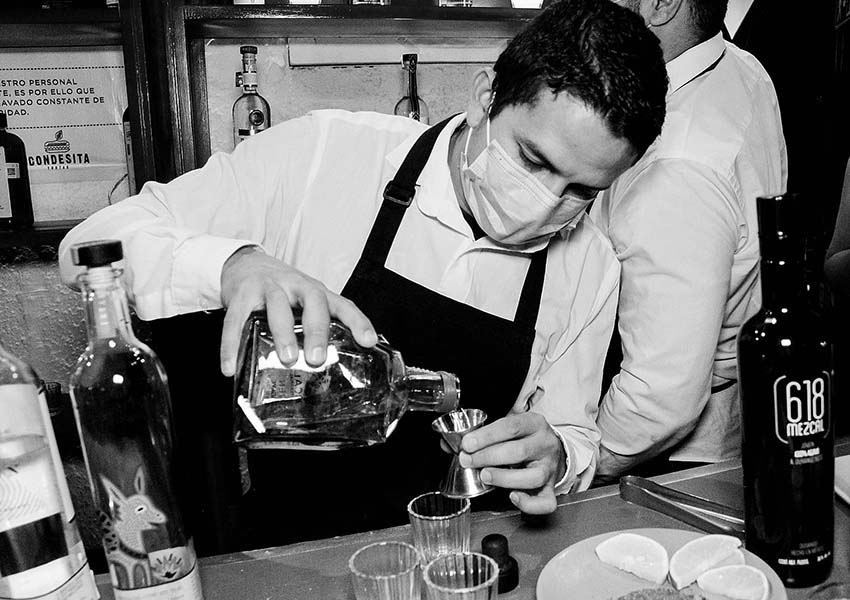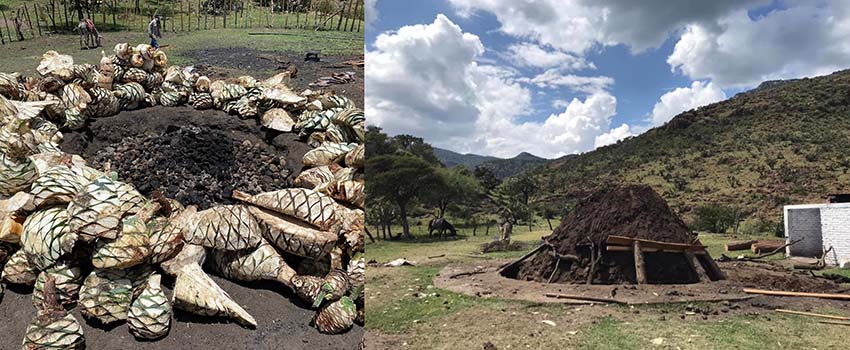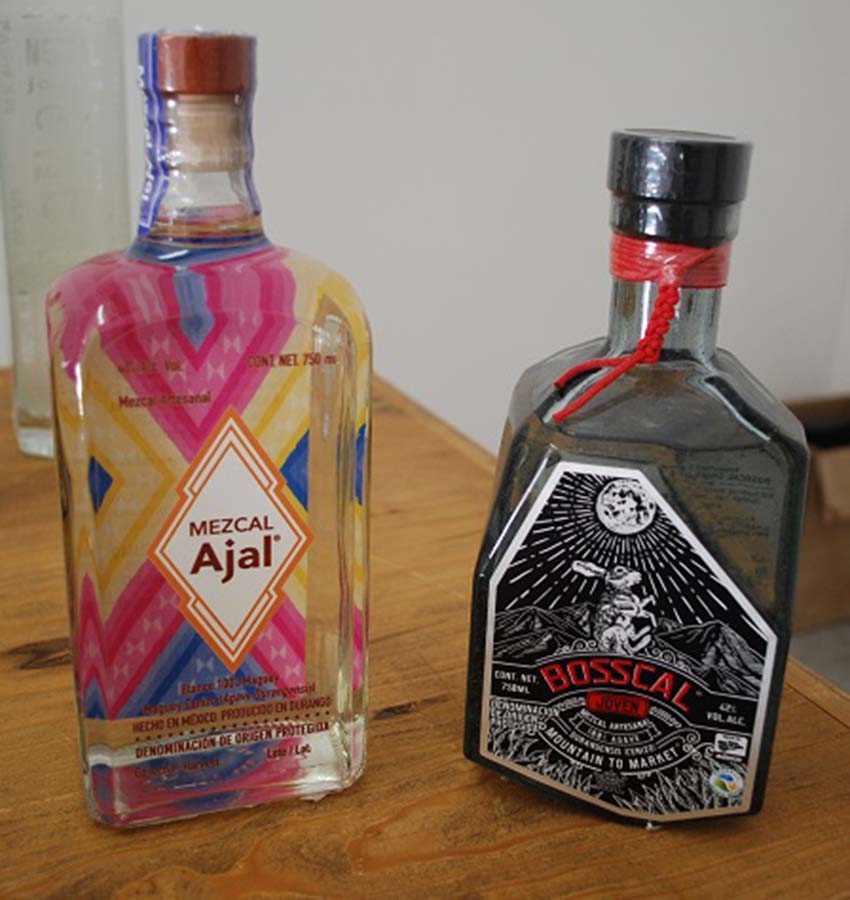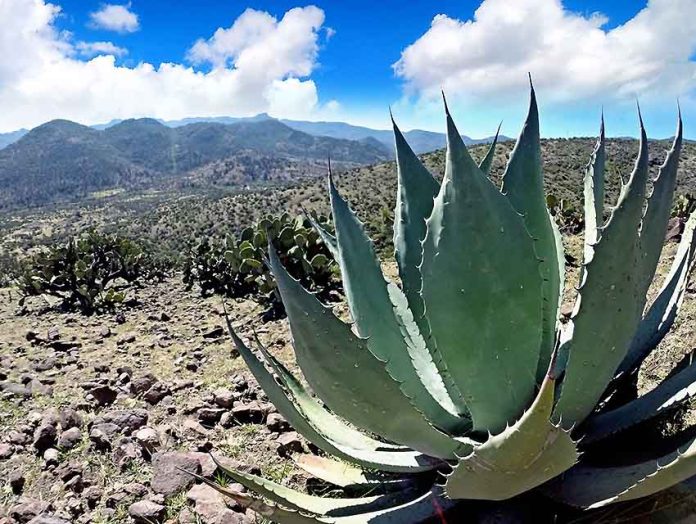Say the word “mezcal,” and, by far, most people think of Oaxaca. But the obscure state of Durango might just be the Mexican liquor’s next big producer.
Agave spirits can legally be called “mezcal” if they are produced in certain areas of Guerrero, Michoacán, Zacatecas, Durango, Puebla and San Luis Potosí, as well as Oaxaca. The variety of agave species and distillation processes make for mezcal with a wide range of tastes.
Oaxaca dominates primarily because of its long-established tourism industry, which provides name recognition and infrastructure for visiting business and leisure travelers. Durango lacks in both areas, but don’t count on this state’s spirits to stay hidden much longer.
Until very recently, all production and consumption of mezcal in this state was very much a family affair. With agave all around, making mezcal became a common farm chore, with some going a bit beyond to make batches for very local sales.

Primarily consumed at home, children grew up around it not only as libations but also infused with herbs and fruits for medicinal purposes. This tradition meant that vinatas (distilleries) locally commercializing mezcal were not organized in any way. Any mezcal sold in places like Durango city was bought from vinatas by intermediaries.
The idea of commercial mezcal from Durango was pretty much inconceivable until the beginning of this century. The first brands, like Cava Rojas and Lágrimas de Dolores, are only about 15 years old. Even many durangueses today still are not particularly interested in buying a Durango brand; they buy from rural producers they already know.
But the boom in mezcal has had an effect: a number of producers, the government, and others are interested in formalizing at least part of the state’s production for economic reasons. However, there are hurdles related to taxes, quality control and sustainability, which few individual vinatas can take on themselves.
In 2018, a number of the larger vinatas and others formed the Durango Mezcal Cluster (Clúster Mezcales de Durango). Their primary focus is to promote the formalization of mezcal-making in Durango by promoting to new markets those which are already branded and help smaller producers jump the legal and bureaucratic obstacles. Today, they represent the 20 largest producers in the state, as well as another 30 who are in transition.

Director Olivia Fernández admits the costs of formalization are considerable, but the prices that Durango mezcal can command in the new markets make the effort worthwhile. They have had considerable success. Today, Durango produces 93,000 liters in full compliance with Mexico’s regulations, compared to the 90,000 still produced and sold/consumed informally.
Like with tequila, the most exciting and lucrative markets are foreign. Brands such as 618, Cuero Viejo, Ajal, Izo, and others are now shipped mostly to the United States, but they’re also sent to Japan, Taiwan and Europe.
The distinguishing factor for most Durango mezcal is the use of Agave duranguensis, colloquially known as the Durango agave or the cenizo (ash) agave due to the plant’s color. Its abundance in southern Durango is why most of the state’s mezcal producers are concentrated in municipalities such as Durango, Nombre de Dios, Súchil and El Mezquital.
However, other mezcals are made with other agaves such as Agave angustifolia (maguey de castilla, cacaleño, tepemete), A. asperrima (lamparillo) and A. maximiliana (masparillo). They mostly come from other areas of the state such as the Mapimí/La Laguna region, in the northeastern part of the state, and the Durango-Sinaloa border. Only a few of these are branded, like Ultramundo, made from the lamparillo agave.

If Durango mezcal branding is young, mezcal tourism is in its infancy. Nombre de Dios is a Pueblo Mágico in large part due to its association with mezcal. Crowds do come here on weekends to drink and buy the liquor, but the 25 or so producers are in the outlying areas. There are no tours, nor are producers set up to receive casual visitors — yet.
To get your first taste of mezcal in Durango proper, start in the capital, Durango city.
Lágrima de Dolores has a small store on 20 de Novembre street, where you can taste and buy. Nearby is probably the best cantina for the enjoyment of Durango mezcal — Juan Matador. The extremely knowledgeable (and English-speaking!) Ignacio Rodarte, who runs it, refuses to recommend a mezcal without knowing a patron’s particular tastes. The cantina’s ambiance celebrates Durango’s traditional cultures, as well as the former bullfighter who lived in the building.
However, if you are looking for a more modern and youthful vibe, La No 19 on the Constitución tourist corridor also promotes the drinking of mezcal in old and new ways.

For those of you unable to make the trip to Durango, finding Durango mezcal gets ever easier. Specialty stores like Mezcalía in Mexico City carry various brands. Several vinatas such as Apaluz, Lágrima de Dolores, Cuero Viejo, Bosscal have full websites with online stores. More have a presence on Facebook and other social media.
One warning however: Durango mezcal is, almost without exception, far stronger than any tequila and even stronger than its cousins from Oaxaca. Duranguenses tell me quite truthfully that this mezcal is “to be respected,” drunk slowly in sips akin to “kissing” it.
Perhaps one reason to try it now is that it is still made the way it was 100 years ago, with wild agave and traditional techniques. But that is sure not to last. Already the Clúster and others are recognizing the sustainability issue, and other issues, that has plagued tequila and Oaxacan mezcal and are taking preventative measures, such as replanting programs.
But for now, you can easily find Durango mezcal exactly like what Pancho Villa and other revolutionaries drank more than a hundred years ago. Get it while it lasts.
Leigh Thelmadatter arrived in Mexico 18 years ago and fell in love with the land and the culture in particular its handcrafts and art. She is the author of Mexican Cartonería: Paper, Paste and Fiesta (Schiffer 2019). Her culture column appears regularly on Mexico News Daily.
